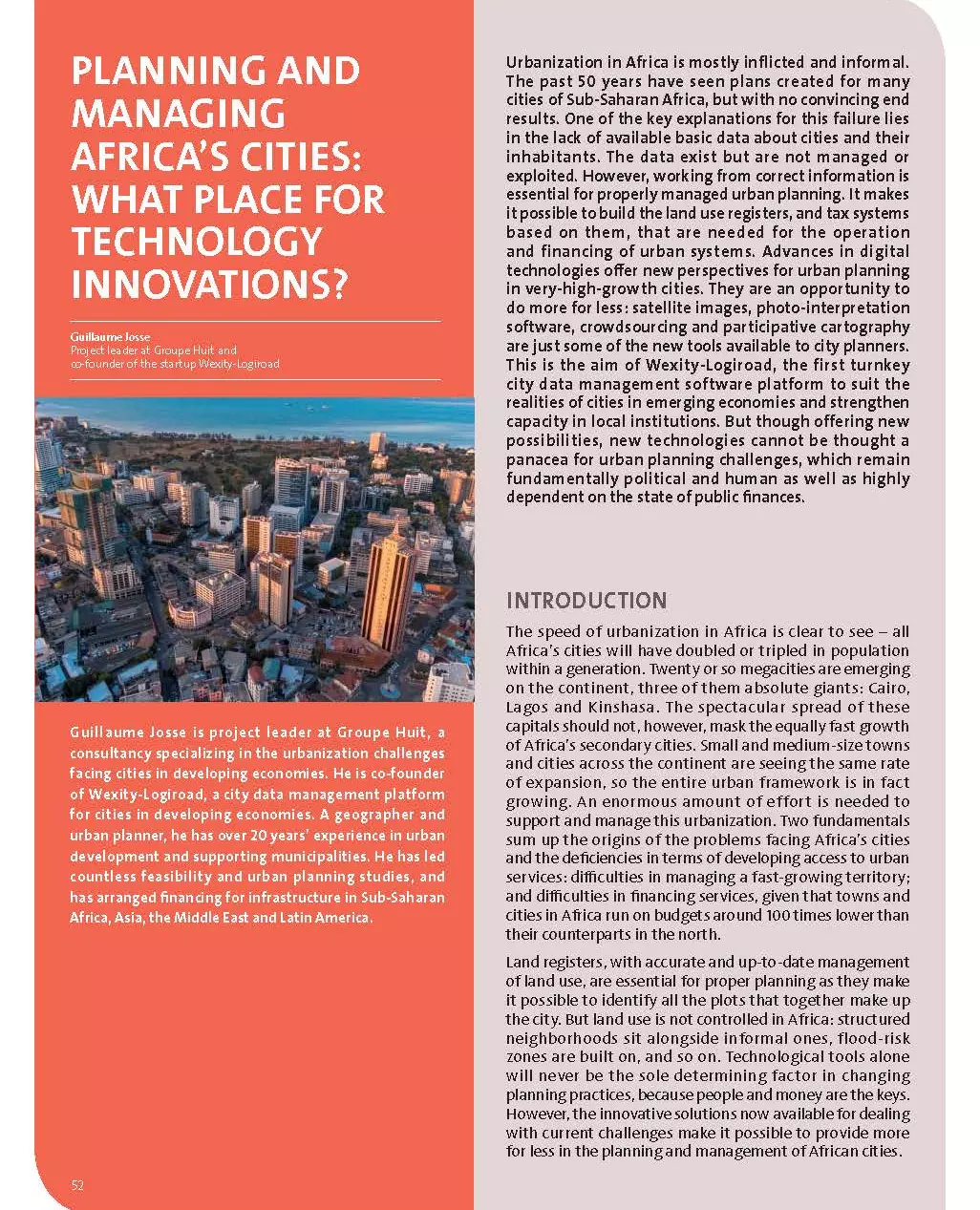Guillaume Josse
Project leader at Groupe Huit and co-founder of the startup Wexity-Logiroad
Urbanization in Africa is mostly inflicted and informal. The past 50 years have seen plans created for many cities of Sub-Saharan Africa, but with no convincing end results. One of the key explanations for this failure lies in the lack of available basic data about cities and their inhabitants. The data exist but are not managed or exploited. However, working from correct information is essential for properly managed urban planning. It makes it possible to build the land use registers, and tax systems based on them, that are needed for the operation and financing of urban systems. Advances in digital technologies offer new perspectives for urban planning in very-high-growth cities. They are an opportunity to do more for less: satellite images, photo-interpretation software, crowdsourcing and participative cartography are just some of the new tools available to city planners.
This is the aim of Wexity-Logiroad, the first turnkey city data management software platform to suit the realities of cities in emerging economies and strengthen capacity in local institutions. But though offering new possibilities, new technologies cannot be thought a panacea for urban planning challenges, which remain fundamentally political and human as well as highly dependent on the state of public finances.



